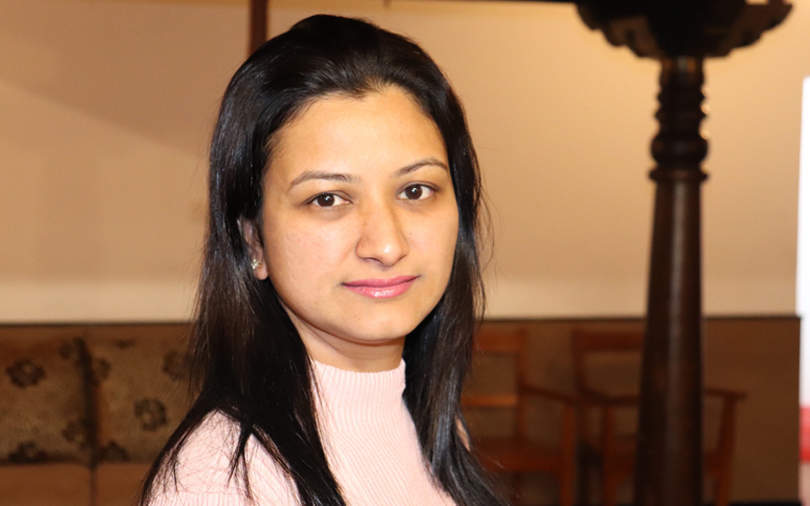
IBM’s Priya Mallya on engaging developers for social impact through coding


Last year, Armonk-headquartered technology giant IBM launched a global initiative dubbed ‘Call for Code’ to bring the developer ecosystem together to build solutions that address humanitarian issues. In its inception year, the initiative focused on finding solutions to mitigate the impact of impact of natural disasters. Developers are invited to create applications based on one or more IBM Cloud Services such as data, analytics, AI (artificial intelligence) and IoT (internet of things).
This year, the theme for Call for Code is healthcare and the company taking the global initiative deeper into India through regional level challenges.
In an interview with TechCircle, Priya Mallya, head of developer ecosystems for IBM in India and South Asia, spoke about bringing India’s growing developer community into the global fold, bringing Project Owl, last year’s winner from Call for Code, into the country and using software to mitigate the impact of natural calamities such as Cycle Fani in Odisha.

Edited excerpts:
What is developer advocacy?
In layman terms, it means enabling the ecosystem of developers to be ready for future technologies. The focus areas align within our business and what the market looks up to are cloud, big data, AI and blockchain.

Ginni Rometty (IBM’s chair, president and CEO) recently said that she expects India to have the largest developer base globally by 2020. Tell us how the developer ecosystem in India is growing and what factors are driving that growth.
India is the fastest growing developer nation today. Through our commitment to open source we are trying to build assets that can be easily and freely used. We have built this on three pillars -- code, content and community.
Code is the end-to-end implementation of any use case that we think has multiple applications. We call it code pattern, which is free code that is open sourced and is available for any developer to use. All they need to have is a GitHub ID (a software development platform). How we use this code pattern is looked into within the pillar of content. We build tutorials, articles, blogs on the code patterns so that a developer can easily inculcate new procedures to learn the code.

In the community pillar, we encourage developers external to our organizations to contribute and use the code patterns and the material available. Today we have close to 5 million developers in India and we are looking to expand the ecosystem.
What role will low-code and no-code play in India in terms of software development?
The code assets is what we are driving our developers towards. We are helping them with small plug-ins that can be used rather than writing the code from scratch. There are many small packets of code that are already available to execute simple use cases. If there is extra coding required, the developers build on top of it. We make these assets available for the developers in the open.

What is the theme for Call for Code 2019? What are you building in partnership with the government of Odisha?
Healthcare is the focus area for Call for Code this year. We have announced regional challenges, apart from the global evaluation. There will also be an APAC evaluation.
In the aftermath of Cyclone Fani in Odisha, we decided to host Call for Code hackathons in Bhubaneswar, alongside Bengaluru, Hyderabad, Pune and Delhi. The theme was to create solutions that could minimize damage from future natural disasters.

A number of solutions to reduce the impact of such disasters were created at the proof-of-concept stage. The code was built and there were demos available on how they would function. We had IBM advocates who mentored the participants on how to easily and quickly utilize the code patterns so as to build software at a much faster pace.
The winning solution used IoT sensors and devices to create a small mobile network that would operate even when the regular networks were down. Another solution enabled better management of drinking water using prediction and modeling to redistribute drinking water efficiently in areas where it was most required. A number of applications were also built on how to optimize mobile data and reach out to victims, how to use drones to accurately reach individuals who needed help. A host of software was built based on data, AI and IoT.
Could you share more case studies where solutions built during Call for Code were used to solve India-specific social problems?

This year we launched a program called ‘Code and Response’. As part of the framework, last year’s winning solution from Call for Code, Project Owl, is currently being implemented. The makers devised the product as a ‘cluster duck’. It is a customized device with IBM-coded software. The device can be dropped into various areas hit by a natural calamity. It uses conversational APIs and predictive analytics to build a mesh network within itself. The device detects signals around it and initiates a communication to the first responder to distress signals. People who come in contact with the device can communicate with the first responders in a fairly intuitive manner. The responder can then give critical information regarding first aid, safe spots for shelter and the safest escape routes from the location. The device is region and disaster agnostic.
We are a couple of months away from launching this initiative globally. The idea is to extend it to various other solutions that can help in regional disaster-hit areas.
We are looking for a few solutions that can be impactful in India by 2019 and are looking forward to recognizing these solutions.
